Lenovo ThinkPad P17 (17″) Mobile Workstation 3DMark Suite Testing
Here we will run the Lenovo ThinkPad P17 (17″) Mobile Workstation through graphics-related benchmarks.
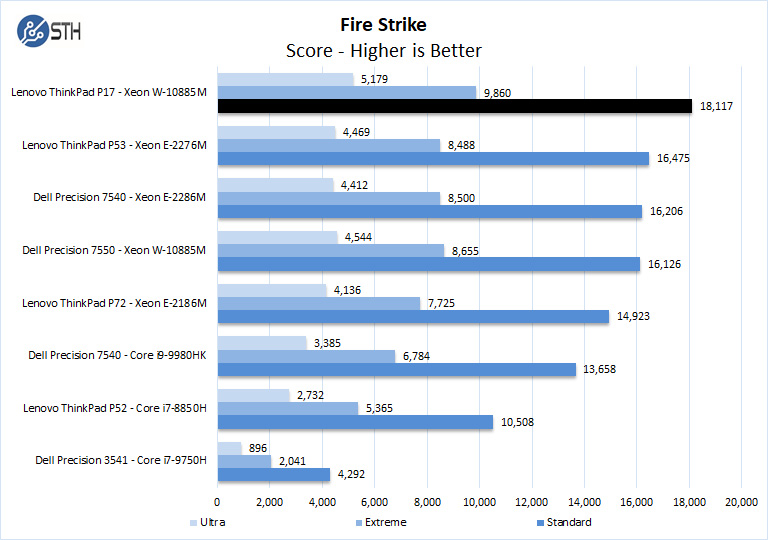
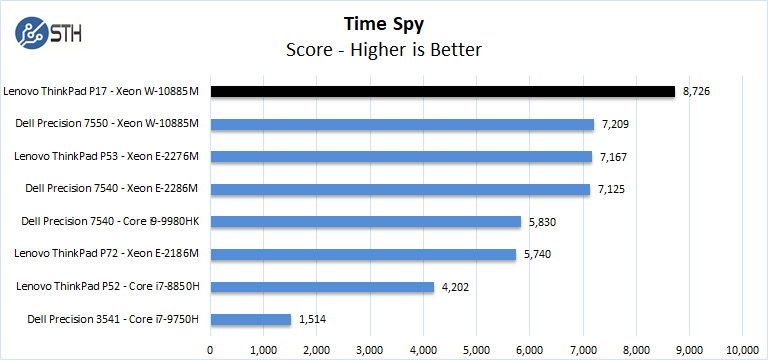
In 3DMark Suite Testing, the Quadro RTX 5000 shows impressive results.
Lenovo ThinkPad P17 (17”) Mobile Workstation Unigine Testing
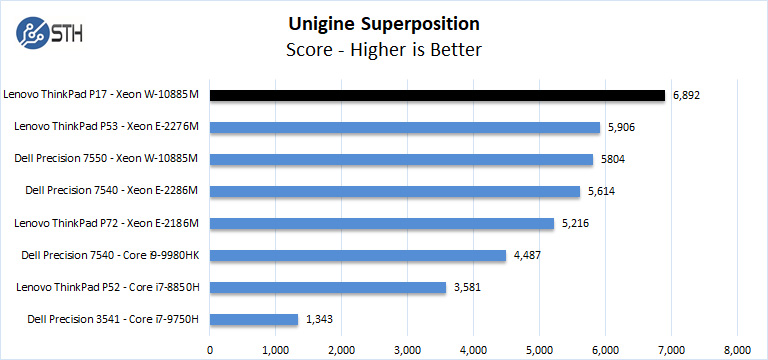
Lenovo ThinkPad P17 (17″) Mobile Workstation with its Quadro RTX 5000 again shows results near an RTX 2060.
Next, we are going to look at the Lenovo ThinkPad P17 (17″) Mobile Workstation with system benchmarks
Lenovo ThinkPad P17 (17″) Mobile Workstation System Benchmarks
We have a number of system-level benchmarks that we run through. We wanted to give some sense of where the ThinkPad P17 falls.
Passmark
Passmark is a common workstation benchmark suite. Here we are simply going to present the result:
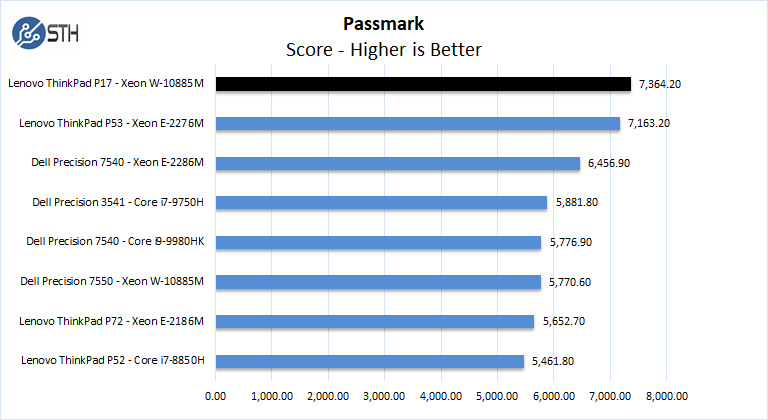
Results are very good in this test which is a pattern we are seeing.
Next, we are going to take a look at SPECworkstation and SPECviewperf benchmarks.



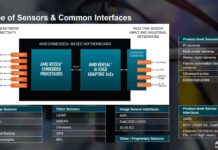
Excellent review!! Your CrystalDiskMark scores are dead-on the same as what I get with a single Kioxia XPG6 512GB (what the unit came with-contemplating storage upgrades at the moment). I’m thinking RAID isn’t set up correctly in your unit? My hardware specs aren’t anywhere near as impressive, nonetheless, for reference; I7-10750H, Quadro T2000, 32GB memory.
Although I’m going strictly from memory, as I wiped out my benchmark folder on a reinstall by not paying attention (oops), but I do recall using Peak Performance NVME mode in CDM, with numbers topping out at just under 32xx and just over 29xx.. I don’t recall my random 4k or other results being as impressive as what you obtained though, plus I just notice the size of the c: volume as 3.8TB, so I have to retract my earlier thoughts about the raid not being set up correctly… That just seems odd that the peak numbers would match a single drive of the same manufacturer/series so closely. I do recall those numbers very clearly… Will run CDM again just out of curiosity..
It’s a complete shame that Intel has such an iron grip on OEMs like Lenovo. Objectively inferior processors are going into “professional” machines now simply due to forced brand loyalty. Ryzen 4000 or 5000 series chips in these laptops would make them a far, far more compelling offering if paired alongside RTX 3080s for premier graphics performance. The sheeple will, of course, continue to recommend and to buy these units for the foreseeable future even as the performance and efficiency disparities between AMD and Intel grow. I’ll be skipping Lenovo’s offering here, yet again.
I liked the keyboard action and feedback response from my old Lenovo laptop, but did not like how the keys were arranged. That is because after using a full size keyboard, would often strike the delete, not the backspace key, by accident, and sometimes there was no going back.
Josiah,
I don’t think that the CPU has much impact on the GPU performance and hasn’t for a very long time.
I’d save my criticism for nvidia needing to do more with storage DMA and laptop vendors needing to afford the space to install PLP Optane, before I really feel like I should start bleating.
The fact is though, that possibilities like that definitely exist for the horizon, and until then I am buying laptops with a unusual cadence because covid brought forward so many usability and performance based usability requirements earlier than we planned for a general horsepower uplift, and just as I’m writing this maybe what I have said is a reason why a lot of people are feeling underwhelmed by the latest offerings, right now.
I’m using a two year old ThinkPad P71 mobile workstation with max specs from that time: Xeon E3-1515M V6 (Kaby Lake QuadCore), 32GB DDR4 ECC, nVidia Quadro P5000 16GB VRAM (nVidia Pascal generation, performance equals nearly a GTX1080), UHD 4K IPS display.
To my surprise Lenovo preinstalled Windows in the Windows 10 Pro for Workstations edition (Kernel features more functions from the Windows Server editions).
Hello and thanks for the review! I have a question about the display. How much of srgb/argb does that display cover? I figured since lenovo is not bragging about 100% argb, it just doesn’t? Thx.